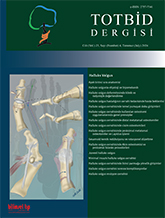
Hallux valgus deformity is a result of the disruption of forefoot biomechanics that develops in the presence of various etiological and predisposing factors. Factors involved in the etiology of hallux valgus include female gender, inappropriate footwear use, trauma, hereditary transmission, and ligamentous laxity. In the presence of these conditions, foot biomechanics are disrupted following a specific sequence. The process begins with the disruption of the medial structures of the first metatarsophalangeal joint and progresses with the displacement of anatomical structures as the deformity increases. Instability of the first ray of the foot, anatomical characteristics of the metatarsal head, disruption of the sesamoid and metatarsal relationship, pes planus deformity, shortening of the Achilles tendon, and functional hallux limitus contribute biomechanically to the development of the deformity. Understanding the biomechanical and pathoanatomical characteristics of hallux valgus will enable planning personalized surgeries, enhance treatment success, and reduce the likelihood of recurrence of the deformity.